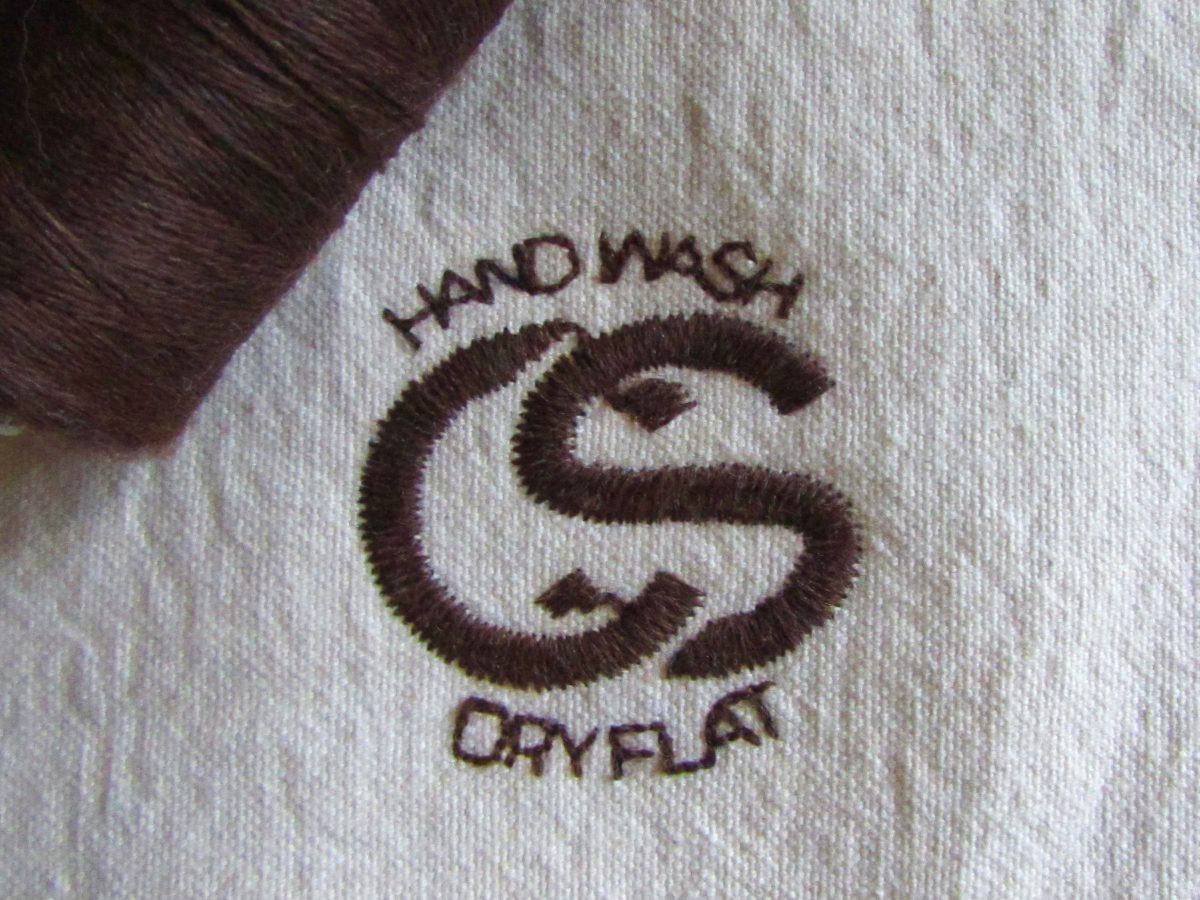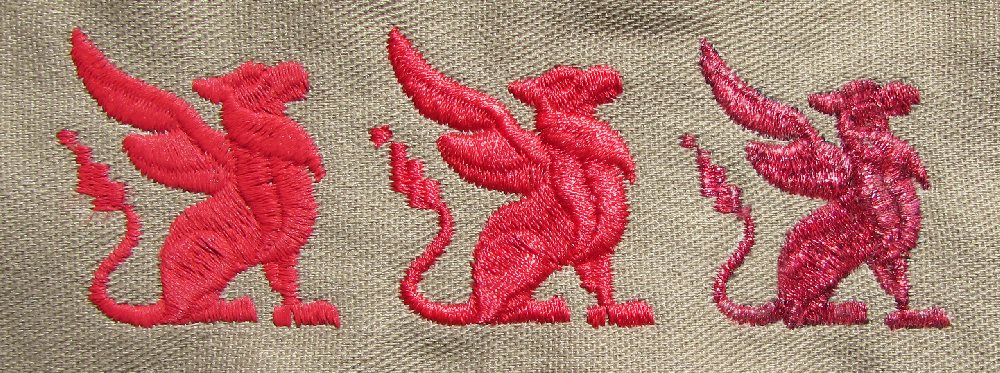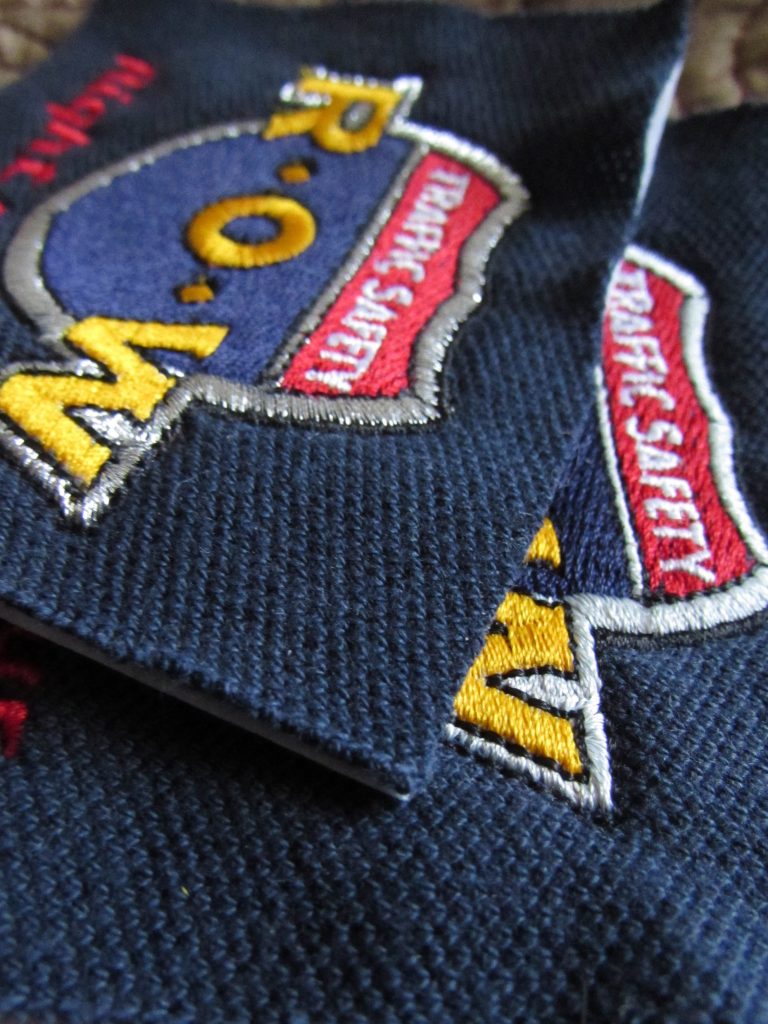
What can adding specialty threads do for my business?
We all know that specialty threads like metallic thread, glow in the dark thread, solar-active threads, matte-finish threads, and fuzzy, thick threads can help us express ourselves artistically and make our designs stand apart. That said, how many of us know how to take what could be seen as a fun diversion for hobbyists and make it into a profit-driving part of our successful decoration businesses?
In my latest article for Printwear Magazine, I explain what specialty threads are, what they can do to improve your designs, and why they can be good for business, all while keeping the costs that come from using specialty threads in mind. This holistic look at specialty threads enables us to realistically evaluate how and if specialty threads make sense in our businesses.

For time-starved decorators-on-the-go, here are the high points:
What’s so special about specialty threads?
In short, they stand out. Most commercial embroidery features thread of a similar thickness and surface quality; it stands to reason that threads than differ from that norm will catch the eye. Promotional products are of no use if they can’t bring attention to the brand or message they represent. Embroidery is no different. Specialty threads help designs stand out without relying on a redesign of the underlying image.
What else can specialty threads do for a design?
Specialty threads can also alter or bolster the intended feeling a decoration attempts to evoke.
Furry, thicker threads bring warmth, even a sense of the slight flaw and looseness associated with hand embroidery. The shine of metallic threads brings associations with the rarity and expense of precious metals and stones, the durability and shine of real metallic objects, or the sparkle of something glossy or wet. Matte threads are perfect when we want a design to look flat or painted, as it’s uniform in color no matter the stitch angle or lighting.

What business-based reasons are there to use specialty threads?
In my opinion, there’s only ever one reason to add anything to your offerings; to increase the actual and perceived value you can deliver. By actual value, I mean that your new offering provides real utility to your client in the use of the garment- think fire resistant threads that are safe and protective or matte finish threads that are UV resistant; these threads enhance the actual usage of the garment.
By perceived value, I mean that the threads make a piece ‘look expensive’. Specialty threads, both by virtue of being distinctive, and by their suitability to a particular design, can make customers think of your product as being worth more than that of a competitor regardless of the level of added utility or investment on your part. Thin threads may enable to you get smaller, crisper lettering. Metallics can add a glittering finish without resorting to other multimedia methods of decoration. Fuzzy threads can enable to you quickly produce handmade looks. These things increase perceived value, especially if competitors in your field don’t offer them.

What are the potential costs that may arise from using specialty threads?
The obvious cost is material- particularly if you have a multi-head shop, you may have a considerable investment in several colors of a specialty thread in quantities it takes to thread all of your heads. The less visible cost is that they require special handling by your staff. Digitizers will have to understand and account for either the increased or decreased densities that some threads require, and machine operators will need to adjust tensions and possibly lower run-speeds to ensure that the more fragile threads stitch properly and consistently.
We must weigh these costs against the gains in actual and perceived value. Much of the battle centers around accurate pricing. You must price jobs accounting for the additional labor. Better still is pricing based on the increased perception of value rather than basing it only on work and materials. Price adequately and based on value, and you will be in a good position to profit.
The Take-Away
Creative people in this business find that it’s easy to do something for the thrill of creating something new without stopping to consider if it’s actually good for our profit margins. Luckily, novelty drives sales almost as much as quality in some markets, and many of our businesses have become well known as the ‘insert specialty decoration here’ shop, with that single outstanding specialty material or process serving as a springboard to further work. There is a solid value proposition here for those who take the variables into consideration, get creative, and price accordingly.
If you want the full run-down, check out the article in this month’s Printwear Magazine for more details.
tags: 60 weight thread, 60 wt, business, embroidery, embroidery thread, erich campbell, fuzzy thread, machine embroidery, metallic thread, perceived value, pricing, printwear magazine, sales, specialty thread, thin thread, thread, tips, value, wooly thread
This site uses Akismet to reduce spam. Learn how your comment data is processed.








LEAVE A COMMENT